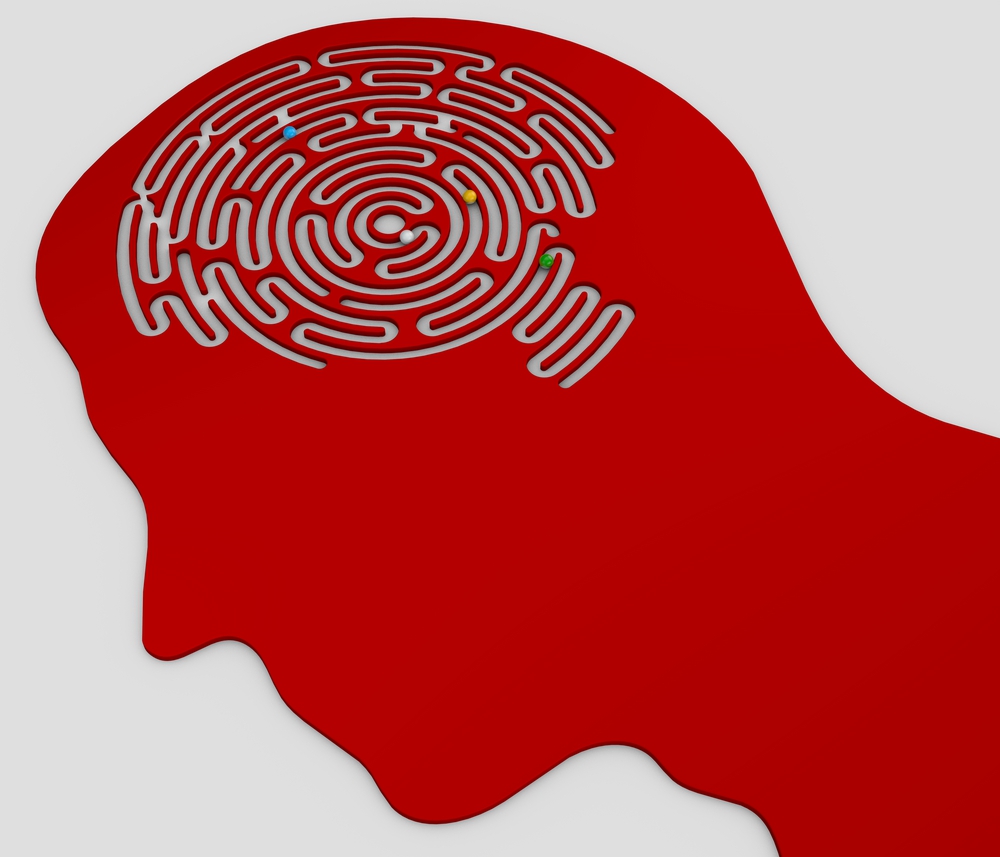A new study from Copenhagen University Hospital offers a rare glimpse into the personal experiences of six individuals as they navigate the complex process of tapering their antipsychotic medications. The research reveals not only the varied outcomes—varying from complete cessation to ongoing treatment—but also underscores a profound increase in personal empowerment and emotional insight regardless of the tapering results.
The study followed six people who were attempting to discontinue the use of antipsychotics. Two of them succeeded in altogether discontinuing the medication, while two others experienced a worsening of their psychotic symptoms during the process. One person was able to lower their dosage significantly, and the last person is still in the process of tapering off the medication. The study, led by Sofie Norlin Mølgaard of Copenhagen University Hospital, presented these 6 cases to highlight the diverse experiences of individuals attempting to taper off and discontinue antipsychotic medication.
The authors write:
“Some patients with schizophrenia might be overmedicated, leading to unwanted side effects and the wish to reduce their medication. The patients in our study illustrate how guided tapering of antipsychotic medication done jointly with the patient can lead to improved emotional awareness and the development of effective symptom management strategies. This may, in turn, lead to a greater sense of empowerment and identity and give life more meaning, supporting the experience of personal recovery.”
This study, published in BMC Psychiatry, examines the techniques used by the clinic to assist patients during tapering. The patients’ journeys are unique, and the research showcases their individual paths. Although not all patients are entirely successful in discontinuing their medication, the process itself helps to significantly improve their sense of independence and overall recovery.

The present research aimed to present the diversity of service user experience of careful and closely monitored tapering of antipsychotics. To achieve this goal, the researchers present 6 case studies from a Denmark clinic specializing in guided tapering of antipsychotics.
To be seen at the clinic, service users must be between 18 and 64 years old and have a schizophrenia diagnosis, according to the International Classification of Mental and Behavioral Disorders—10th edition. Additionally, service users must agree to take their prescribed antipsychotics and adhere strictly to the clinic’s tapering schedule. Service users must also be available to speak weekly by telephone and attend monthly appointments.
Exclusion criteria include psychiatric hospitalization in the past six months, substance abuse that could limit the service user’s ability to attend appointments and a high risk of suicide or violence. Service users may also be excluded from clinic services if a psychiatrist concludes tapering may be dangerous.
Each clinic service user is evaluated monthly using the Positive and Negative Syndrome Scale (PANSS), an assessment tool that measures the severity of schizophrenic symptoms. The dose of antipsychotics is reduced by 10% each month. After half the initial dose is reached, tapering slows to a 5% reduction each month. In consultation with clinic staff, the service user decides when to stop tapering. The clinic continues service user observation for six months after the service user chooses to stop tapering or reaches discontinuation.
Service user A had been prescribed the long-acting injectable (LAI) form of aripiprazole for several years. When he came to the clinic, he was prescribed 400 mg/month and had an initial PANSS score of 70. After 12 months of careful tapering, he was able to discontinue his antipsychotic use altogether. At the end of the clinic’s 6-month observational period after discontinuation, service user A had a PANSS score of 38. After 12 months of no antipsychotic use, service user A has not reported any psychotic symptoms.
Service user B had been taking antipsychotics for more than ten years. When he first came to the clinic, service user B was taking 300 mg/month of LAI aripiprazole. His initial PANSS score was 66. After ten months of careful tapering, service user B took his last 80 mg of LAI aripiprazole, and his PANSS score had reduced to 52. After 14 months of antipsychotic discontinuation, service user B has not reported any psychotic symptoms.
Service user C had been taking antipsychotics for several years. When she came to the clinic, she had been taking 20mg/day of aripiprazole for the past year and had an initial PANSS score of 40. After six months, she had tapered her dose down to 5 mg/day and decided to stop the tapering there. Four years after tapering service, user C still hears a supportive voice in her head, but this does not cause any uneasiness or suffering, and she does not experience any other psychotic symptoms.
Service user C reported that tapering her dose made her more emotionally available, and she felt “in charge of her own life.”
Service user D was taking 10 mg/day of aripiprazole and had an initial PANSS score of 34 when he first came to the clinic. After receiving clinic services, service user D revealed that he had not been taking his medication regularly. He was then switched to 200 mg/month of LAI aripiprazole. After four months, his dose was tapered to 120 mg/month. Service user D then began experiencing increased psychotic symptoms, including auditory and visual hallucinations, and his PANSS score increased to 40. He also had to take sick leave from his job. The clinic then adjusted his dose to 300 mg/month. After two months, his PANSS score had dropped to 31, and he was able to return to work. Although he was not able to discontinue his antipsychotic use, service user D reports: “I think the time in the clinic has been good. I’m sad that I couldn’t do without medication, but now I know medication is important for me.”
Service user E was taking 200 mg of LAI aripiprazole every 5th week and had an initial PANSS score of 59 when she came to the clinic. Her aripiprazole dose was changed to 160 mg/month by clinic staff. After two months of tapering service, user E’s PANSS score increased to 62. She reported feelings of being watched and was scared of others. Two weeks later, service user E experienced an increase in psychotic symptoms, including intrusive thoughts, derealisation, and persecutory delusions. Her PANSS score increased to 67, and clinic staff boosted her antipsychotic dose to 300 mg/month with an additional 5 mg/day. Service user E was subsequently hospitalized for 11 days as a result of her psychotic symptoms. She stabilized two months later, and her PANSS score improved to 48.
Service user F had been treated with multiple antipsychotics as well as electroconvulsive therapy for his persistent and treatment-resistant delusions of clairvoyance and telepathy. When service user F came to the clinic, he was taking 175 mg/day of clozapine and 250 mg/day of amisulpride. He had an initial PANSS score of 85. After 16 months, service user F has reduced his clozapine use to 12.5 mg/ day. He has not experienced any increase in psychotic symptoms and has the same level of function as when he first came to the clinic. Service user F is still in the process of tapering and plans to discontinue clozapine use over the next four months.
The authors contend that while tapering antipsychotics may involve some risks:
“Determining whether the current antipsychotic dose is still needed can only be ascertained by reducing the dose, and, as most side effects are dose-dependent, treatment with the lowest effective dose is of crucial importance.”
The authors report that while not all service users are successful in their attempts to taper and/or discontinue antipsychotic use, their attempts at discontinuation and the support of clinic staff give service users a sense of autonomy and empowerment. Four of the six service users included in the current work reported increased emotional awareness, leading to better stress management strategies and increased feelings of recovery.
The authors acknowledge one major limitation of the current research. The 6 cases presented in the current work were chosen to demonstrate the diversity of tapering experiences and are not qualitatively representative of the service user experience of tapering antipsychotics. This means the results are not generalizable to any population.
Discontinuation of antipsychotics is difficult due to the withdrawal symptoms that often accompany the process, especially if careful tapering is not observed. Previous research has found that success in discontinuing antipsychotics is reliant on multiple factors such as internal resources, systematic factors, and access to supportive figures such as medical professionals and friends/family. Numerous studies have found that slow tapering is the best strategy to mitigate the adverse effects of withdrawal, such as psychotic symptoms. These psychotic withdrawal symptoms are often mistaken for a return of the initial psychosis, although this is less likely when slow and careful tapering is observed.
****
Mølgaard, S. N. et. al. (2024). Clinical experiences of guided tapering of antipsychotics for patients with schizophrenia– a case series. BMC Psychiatry 240. (Link)















I love seeing research like this. I’ve worked with a lot of folks diagnosed with psychotic disorders, and from what I’ve seen, most of them are wildly overmedicated, but there are some who seem to get enormous benefit from antipsychotic medications. In the same way, some folks experience their voices/experiences as positive and meaningful, and others as totally useless and meaningless. So I like seeing this kind of third option, where it’s neither “their brains are broken, everyone must be medicated”, nor “antipsychotics are always harmful/oppressive and everyone can/should live without them”, but instead “as long as individuals have autonomy, support, and personal control over their meds, they will end up living more empowered and connected lives, no matter what dosage they ultimately choose for themselves”. Hopefully we see bigger studies with more generalizable results soon!
Report comment